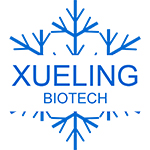
Vitamin D3
Vitamin D is a fat-soluble vitamin and is also regarded as a hormone precursor that acts on calcium and phosphorus metabolism. It is closely related to sunlight, so it is also called the “sunshine vitamin.” There are at least 10 known types of vitamin D, but the most important ones are vitamin D2 (ergocalciferol) and vitamin D3 (cholecalciferol).
Vitamin D2 is produced from ergosterol in plants exposed to ultraviolet rays and exists in small amounts in nature. Vitamin D3 is converted from 7-dehydrocholesterol contained in the epidermis and dermis of most advanced animals by ultraviolet rays (wavelength 265~228nm). Vitamin D3 is the active form of vitamin D with the highest biological metabolism.
Application
1. Improve the body’s absorption of calcium and phosphorus, so that the levels of plasma calcium and plasma phosphorus reach saturation.
2. Promote growth and bone calcification, and promote healthy teeth;
3. Maintain normal levels of citrate in the blood;
4. Prevent the loss of amino acids through the kidneys. [1]
5. Reduce the incidence of common cancers, such as breast cancer, lung cancer, colon cancer, etc.
6. Prevent and treat autoimmune diseases, hypertension and infectious diseases.
7. Vitamin D regulates the development and function of the placenta, which suggests that maintaining good vitamin D levels in pregnant women can prevent pregnancy complications such as miscarriage, preeclampsia, and premature birth.
8. Adequate vitamin D in utero and in infants and young children can reduce the incidence of type 1 diabetes, asthma and schizophrenia.
